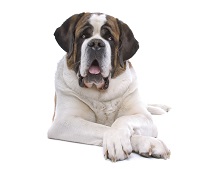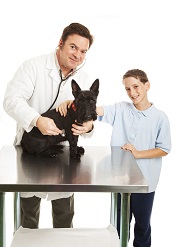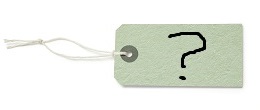 American Pet Products estimates that American pet owners will spend $23 billion on pet food this year and an additional $14 billion on “supplies,” a category that would have mystified John Thornton, the main human character in Jack London’s classic novel The Call of the Wild (which was written, incidentally, not far from CrossCheck’s headquarters).
American Pet Products estimates that American pet owners will spend $23 billion on pet food this year and an additional $14 billion on “supplies,” a category that would have mystified John Thornton, the main human character in Jack London’s classic novel The Call of the Wild (which was written, incidentally, not far from CrossCheck’s headquarters).
Buck, Thornton’s St. Bernard, learned to curl up around his ration of meat and cover his nose with his tail to survive howling storms in the dark and unforgiving Alaskan wilderness. Thornton felt he had done enough for his dog by providing him with the meat, but the modern American pet owner feels compelled to address the anxiety thunder causes his pet with specially made “non-medicated calming apparel” and to occupy him with “mentally stimulating dog toys.”
Why, then, do Americans think a $55 dollar annual visit to the vet is too expensive?
Billions Available – How to Get Your Share
Veterinarians determined to get their share of the billions available in the pet care market have begun to dramatically re-examine the way they do business – and the ones acting now to attract new patients and to offer creative ways of arranging payment stand to significantly expand their market share.
Prosperous veterinarians set out to address three main problems:
- Pets hate going to the vet – in fact, 38% of dog owners and whopping 58% of cat owners avoid taking their pet for treatment due to this fact alone. But while 60% of veterinarians say their top priority for business development is to increase visits, only 11% of them have modified their practices to attract the most vastly under served potential market: cat owners.
A Bayer study determined that establishing cat-only hours of operation was the simplest and most effective way to tap this new source of revenue. Hours reserved only for small dogs, big dogs, birds and other pet types will not only calm the pet – and the pet’s owner – they may significantly distinguish your business from the competition and earn you new patients and referrals. This is especially the case if appointments are freely available outside of work hours and on the weekends.  Pet owners don’t understand the importance of annual check-ups, and according to the Bayer study most veterinarians can’t teach them. When asked, nearly 70% of owners say they will spend more on their pet’s health, but they’re not thinking in terms of visits to the vet – they’re thinking about dietary supplements and luxury pet hotels. Most pet owners think veterinarians’ primary function is to provide immunizations, which they can purchase inexpensively at any feed store and administer to their pet themselves.
Pet owners don’t understand the importance of annual check-ups, and according to the Bayer study most veterinarians can’t teach them. When asked, nearly 70% of owners say they will spend more on their pet’s health, but they’re not thinking in terms of visits to the vet – they’re thinking about dietary supplements and luxury pet hotels. Most pet owners think veterinarians’ primary function is to provide immunizations, which they can purchase inexpensively at any feed store and administer to their pet themselves.
Successful vets will have their entire staff – and themselves – memorize a concise value statement explaining that the preventative value of an annual exam can save thousands over the course of a pet’s life. They will focus their marketing on educating owners about the importance of physical exams, dental hygiene, fecal and blood analysis—not to mention basic diet and exercise coaching to counter the epidemic in pet obesity.- Radical advances in veterinary care’s capabilities and increasing pet life spans have caused costs to skyrocket, and it seems that every pet owner knows a horror story about a $55 dollar check-up that rapidly escalated into a treatment costing ten or twenty times that. Over the last decade procedure fees have increased up to 29%, anesthesia fees 31%, and surgery a staggering 61%—and all are still rising.
Veterinarians expanding their market share will openly explain that “economic euthanasia” may be the biggest threat most pets face, and that the solution is an annual check-up to keep the pet in good health and to address, early and effectively, issues caused by care giving mistakes and by simple aging. Using honesty to build trust and confidence can help your clients avoid high-risk, high-cost treatments for catastrophic ailments that could have been prevented.
Payment Options May Be the Key
 Probably the most significant finding in the Bayer study is that pet owners just want to know how much it costs to provide their pet with excellent medical care so they can prepare for it.
Probably the most significant finding in the Bayer study is that pet owners just want to know how much it costs to provide their pet with excellent medical care so they can prepare for it.
Many indicated that they would prefer to spread the cost of an expensive visit – geriatric screening or allergy testing, for example – over a longer period of time so they are not faced with a single large invoice. Offering a multiple- or hold-check option may enable these clients to do just that, and in a fashion that guarantees the marketing you did to get them into your office in the first place results in revenue dropping to your bottom line.
Post-crisis, the prevalence of credit cards has dropped 64%, and many Americans are loathe to finance anything on a card typically charging 15-22% interest. Allowing them to write two to four checks to be deposited over a thirty-day period – or longer, in some instances – may be the perfect solution for both of you. We guarantee all the checks we approve, so you can rest assured of revenue, and your client can arrange payment to meet their cash flow. The icing on the cake is remote deposit capture. The checks you just accepted from your customer can be deposited from the convenience of your desktop, saving you time and money while caring for the environment. Learn more here.



